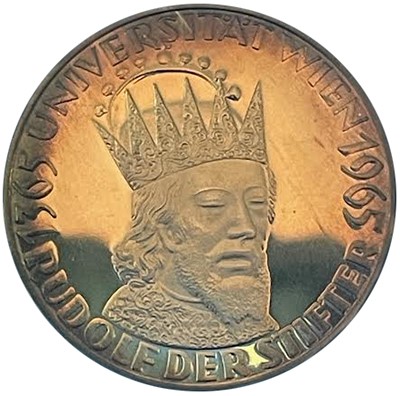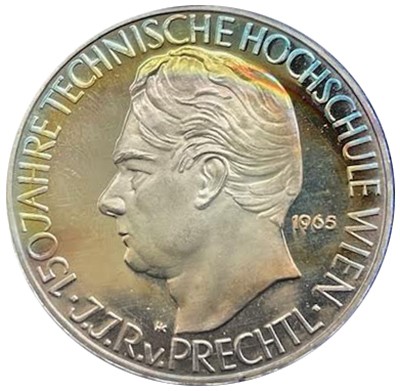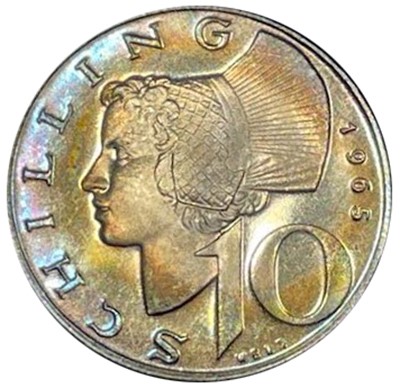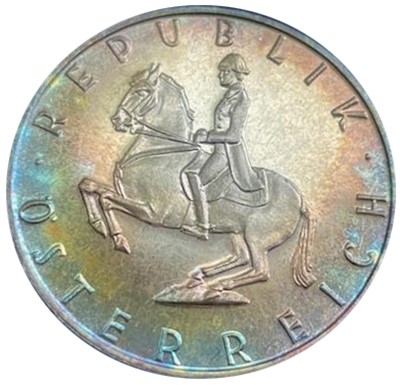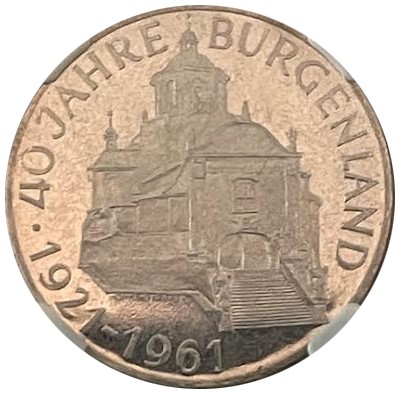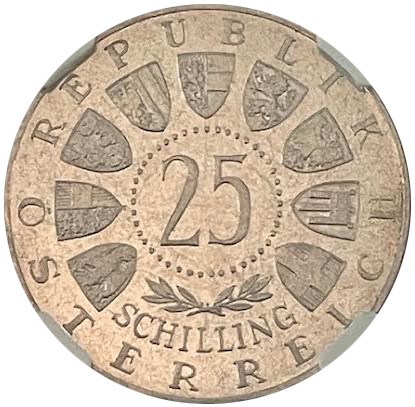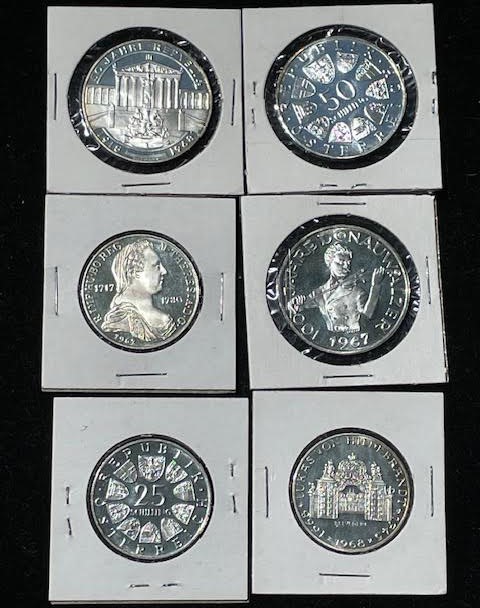Jim Bisognani: Starting a Collection with European Flavor on a Budget
Posted on 6/13/2024
 |
It is a cool and cloudy day as yours truly methodically searches through auction data and sundry dealers' listings. Keeping an eye on the metals, too, as a bit cooler CPI is another impetus prompting movement for gold and silver spot. I took pause to take a look at one of my own coins, which sits next to my computer. The coin is an 1864 Large Motto 2 Cent piece that I have had since I was a kid. Then it struck me: It is definitely not the same coin culture today I remember as a youth, and I am sure that sentiment is echoed by many veteran coindexters.
As I sit here analyzing reams of auction data and sales, it is truly amazing that there are dealer-to-dealer transactions, collectors constantly buying and bidding, and there is some type of auction activity every day online. With a major assist to electronic trading networks, there are viable transactions between dealers and new material is available literally 24 hours a day for dealers to inventory and offer to their customers. If you don't want to wait for one of the plethora of online numismatic auctions, then behemoths like eBay are offering coins 'round the clock, around the world.
Yes, my fellow coindexter, literally thousands of opportunities each day to acquire and sell coins. Yet I guess the fundamentals are still in place for the budding coin enthusiasts. Virtually every week I'll get an email from someone looking for a bit of guidance to help jump-start their numismatic journey.
Last week, Chris from Reading, Pennsylvania asked me what opportunities there are in silver coinage. Silver is a metal that I am very keen on as readers of this column will note. Chris is on a limited budget, saying "I don't want to just get a silver bar or a round, or circulated 90% US silver or a Silver Eagle. They just seem so commonplace. They are everywhere, on TV, on eBay, etc."
Chris said he was looking for something that had a bit of history behind it. He wants it to have collectability and a change of design, as he’s looking for variety to start his collection. The potential obstacle is that Chris wants to be a collector of Mint State or Proof silver, but he also wants to have a good base of value with his silver coinage. In other words, he wants to buy silver coins with some collectability that can also be bought at or near ASW (actual silver weight). Now, is this possible in today's market? Yes, it is.
Starting a European collection, without breaking the bank
Actually, the first item that came to my mind is one of my favorite world coin sets. The four coins are all silver and housed in a stylish genuine leather wallet with a blue velvet interior. The set is the 1965 Austria, Vienna University Proof Set. Commemorating the 600th anniversary of Vienna University, the Proof set consists of a 5, 10, 25 and 50 Schilling coin. The mintage was a modest 37,000.
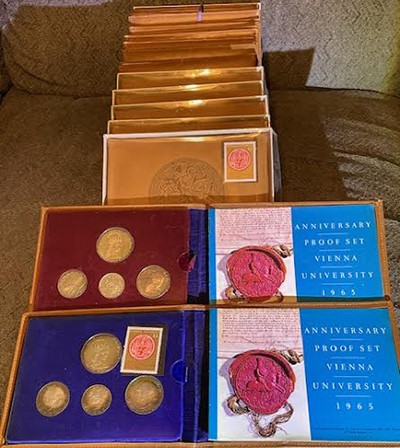 |
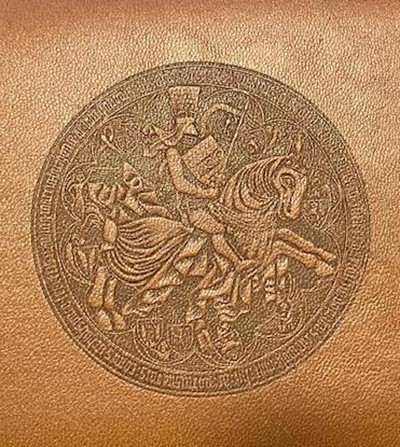 |
| LEFT: 1965 Austria, Vienna University Proof Set RIGHT: The leather wallet, which has a velvet interior Click images to enlarge. |
|
For the record, this is personally one of my favorite world sets and indeed was probably the first world Proof set that I ever bought. The phenomenal thing about this is that you can still buy the sets, doling out just a modest percentage over melt. If you go on eBay, you’ll find many listings and usually the average price is around $45 to $50 for the set, which is still a reasonable buy given that the actual silver weight comes out to be 1.17 ounces. As of today’s writing, that equals $35.10 ASW.
However, with that said, I have personally purchased two of these sets in the past month for a total of $25 each, including shipping off of eBay. That, my friends, based on the current market, is a full $10 below melt value!
Yet for me, the design of the Austrian coins and the commemoration of Vienna University make this special. The 50 Schilling piece features the crowned bust of Duke Rudolph IV, who founded Vienna University in 1365. I’ve always enjoyed the obverse design, as it evokes a stylish rendering reminiscent of a more medieval look. Then the 25 Schilling commemorates the 150th anniversary of the Vienna technical high school (Vienna Polytechnic Institute), with the obverse featuring the first rector Johann Joseph von Prechtl.
The 10 Schilling obverse features the charming young Woman of Wachau design. And perhaps my favorite, the 5 Schilling, which features the famous Lipizzaner stallion with rider in the fabulous rearing position. All reverses feature shields: A single shield adorns the 5 Schilling and 10 Schilling, with the 25 and 50 bearing a circle of 10 shields.
One of the most interesting aspects of the sets is the fact that many of the coins have acquired truly dramatic and colorful toning from the blue or red velvet interiors in the leather wallet. Many of the sets will also include a commemorative postage stamp. I still have my very first set, which I purchased when I was about 12 years old for around five dollars. In the ensuing 55-plus years, I probably accumulated another 50 or so.
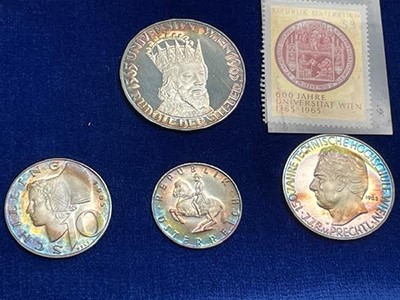 |
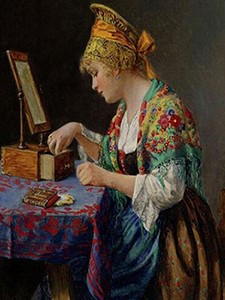 |
| LEFT: Vienna set showing color toning from velvet interior RIGHT: Woman of Wachau Click images to enlarge. |
|
As I said, I always enjoyed the Vienna University Set. Speaking of Austria and affordable silver coins, I would also suggest that Chris from Reading and others looking for more bang for their silver buck, to visit the Austrian commemoratives from 1955 to 1975. Both the 25 and 50 Schilling coins offer a variety of commemoration, are exquisite in design and have moderate mintages along with modest spreads above spot value.
The inaugural 1955 25 Schilling commemorates the reopening of the “Bundestheater,” the national theater in Vienna. The mintage for the Mint State coins was 1.5 million, yet the Proof mintage was a mere 1,000. They are truly a modern “rare issue” even today. I have seen Proofs being offered by some sellers on eBay for near ASW. Mint State coins can still be purchased around ASW though.
The 1956 25 Schilling commemorates the 200th anniversary of the birth of Wolfgang Amadeus Mozart. Again, this issue in Mint State can be found at a tad over ASW. Once again, the Proof version was limited to a mere 1,000, and given the subject matter and low mintage, the Proof version in higher grades can bring over $500. Yet, even with this dynamic issue, “Proofs” can be mistaken as Mint State as well. So, be on the lookout for Proofs being sold at Mint State prices.
The 1957 25 Schilling commemorates the 800th anniversary of the Mariazell Basilica and has a truly majestic obverse design. This coin is easy to acquire in Mint State close to silver value, but the Proof version was once again limited to 1,000 and is very rarely seen for sale. According to the NGC Census, a mere 22 have been designated as Proof, and only five have achieved Proof Cameo status.
For me, a personal favorite is the 1961 25 Schilling, which commemorates the 40th anniversary of the Austrian state of Burgenland. The main design features the Haydn Church, also known as "Bergkirche" in Eisenstaedt. This world-renowned Burgenland church is as famous musically as it is for its splendor of design.
Joseph Hayden, who is entombed in the church, led and performed many of his compositions at this venue — and even that fellow Beethoven led premieres of his compositions there. Once again, Mint state examples can be had around melt value, yet the Proofs, which again were limited to 1,000 or fewer strikes, are rarely encountered in Proof Cameo or Ultra Cameo. Presently, the NGC Census reveals a total of only 24 Proof coins. Six designated as Proof, 14 designated as Proof Cameo and 4 graded Proof Ultra Cameo. I’m lucky to have this NGC PF 66 Cameo example in my personal collection.
The 50 Schilling modern Austrian Republic commemorative series began in 1959 and are all virtually available for around ASW in Mint State. Yet, unlike the early 25 Schilling coins, only the inaugural 50 Schilling 1959 Liberation of the Tyrol is “rare” in Proof, with only 1,000 struck.
The next 50 Schilling piece, the 1963 Union of the Tyrol, had a Proof mintage jump to 10,400. The next installment, the 1964 Olympics “Ski Jumping” issue, saw that Proof mintage skyrocket to 67,950.
Another favorite of mine is the popular themed 1967 50 Schilling, which commemorated the 100th anniversary of the composition of the “Blue Danube Waltz.” The main obverse design is the composer Johan Strauss playing the violin. As is with all of the coins within the series, Mint State examples can be found for very little over their melt value. And though the Proof mintage is a meager 26,100, you can readily locate nice Proofs for a “song.”
Be sure to check out all of the other Austrian 25 and 50 Schilling coins with the NGC World Coin Price Guide. Variety, culture and history for a soupçon! Until next time, be safe and happy collecting!
Want to see more articles like this? Subscribe to the free NGC Weekly Market Report.
Stay Informed
Want news like this delivered to your inbox once a month? Subscribe to the free NGC eNewsletter today!
